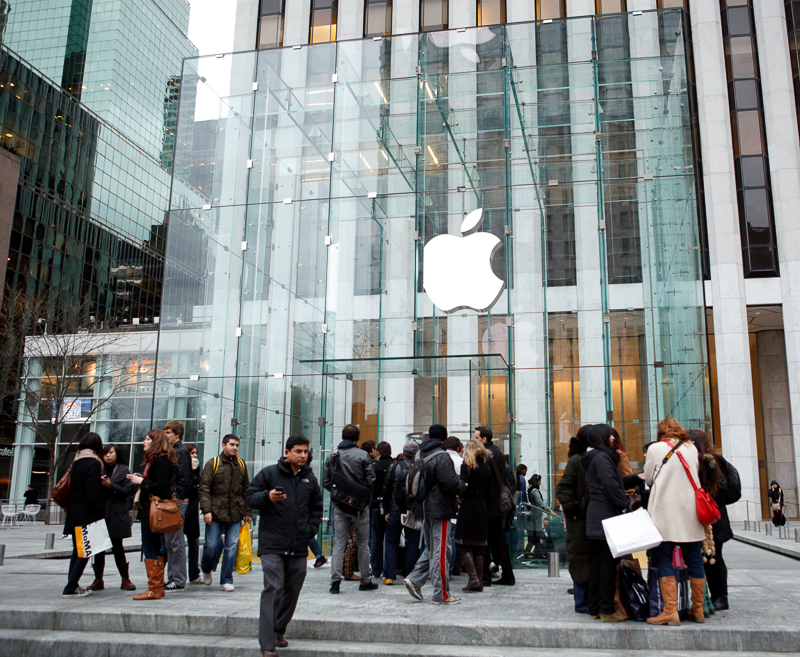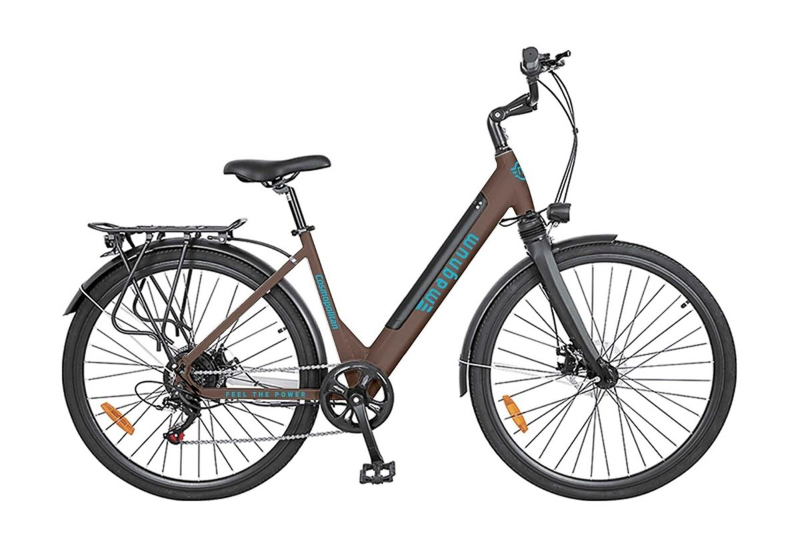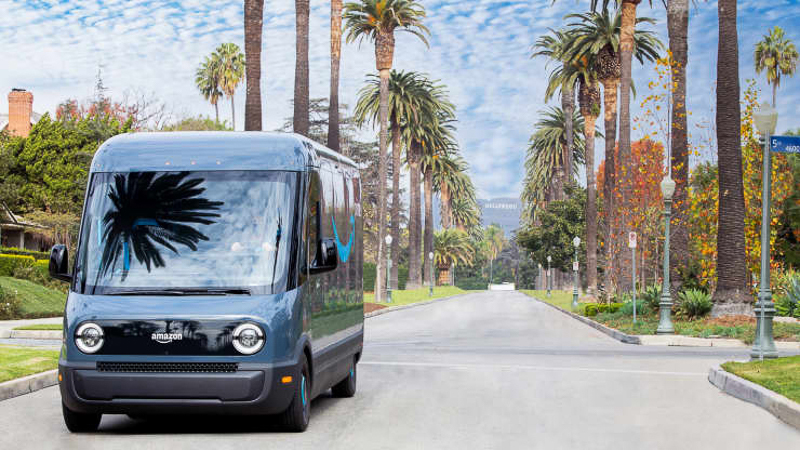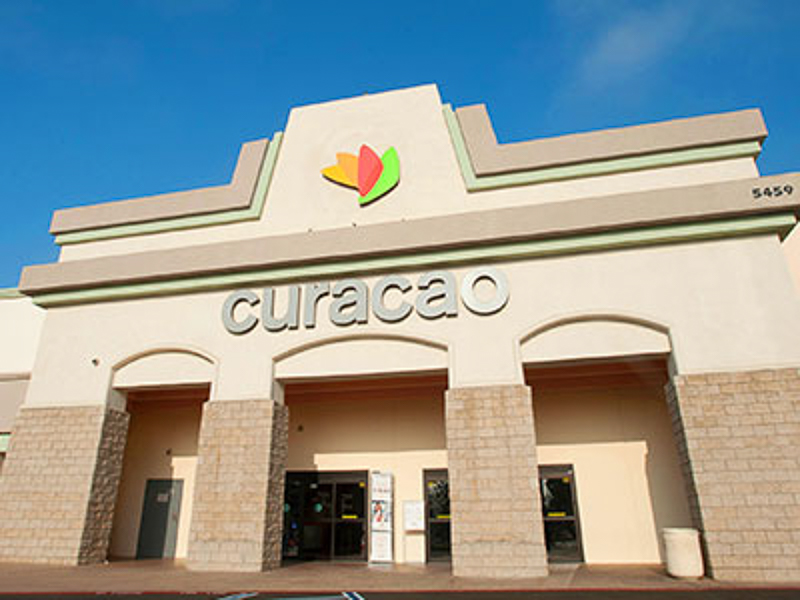A lot happened in 2021. Demand rose, but so did supply-chain slowdowns. More stores reopened than closed in 2021, but some of the closings, such as Fry’s, hit hard. While some live events restarted, others didn’t. Corporate governance improved, with a rise in women CEOs and sustainability initiatives, but that didn’t stop a rise in sea levels and data breaches. And speaking of data, it not only makes the Internet of Things (IOT) world go ’round, but will also continue to create ever-growing demand for chips, which brings us back to the shortage. Whether we see this past year as a glass half full or a glass half empty, we can all agree on one thing: 2021 was certainly better than 2020. Without further ado, here is Dealerscope‘s Best and Worst of 2021.

Best: Stores reopen.
The COVID-19 pandemic, and the resulting quarantine, led to many stores closing for a good portion of 2020, but towards the end of the year and early Spring of this year, when the vaccine rollout expanded to most of the adult population, most brick-and-mortar stores that were still in business fully reopened. The last of the Apple Stores that closed in the pandemic reopened in June. By this past summer, per NPR, the retail industry was hiring people again at a record pace, even as job vacancies persisted. And IBIS World said in July that revenue in the consumer electronics stores industry was expected to grow 1.7 percent year-over-year over 2020.
With vaccines available now even to children, and international visitors allowed to travel to the U.S. since the beginning of November, it looks like there’s no turning back. In late October, the National Retail Federation (NRF) estimated that holiday sales would be up by 10.5 percent, partly thanks to consumers confident enough to go to brick-and-mortar stores again. It turns out e-commerce fatigue is real, which can be a boon for brick-and-mortar retailers.
Yes, curbside delivery, eCommerce, and BOPIS retail are now all part of the retail mix’s new normal, but every smart retailer has evolved to handle it over the past two years.
While the pandemic is by no means over, with various supply-chain issues leading into a whole other series of headaches, the industry is beginning to approach something like normal.

Best: Demand and revenue continue to rise.
The early days of the pandemic led many to conclude that consumer electronics demand would crash due to economic uncertainty. But once it became clear that people would be stuck at home for an extended period, sales soon surged for a variety of products. Those who needed better computers and TVs for work-at-home setups bought them, while previously moribund product categories such as webcams experienced an unlikely comeback. Meanwhile, city slickers fleeing to the suburbs and the stay-at-home workforce began to upgrade their dwellings, which led to an uptick in appliance and smart device sales.
The high demand has continued in 2021. NPD Group forecast in August that sales for the industry would reach $113 billion, a seven percent increase over 2020. In September, the most recent month for which sales figures from the government are available, retail sales in the electronics and appliance sector dropped 0.9 percent month-over-month, but gained 17.3 percent year-over-year.
“Revenue growth in Q4 will be driven by higher prices in the industry’s most popular holiday categories like big-screen TVs, PCs, gaming, and audio. As consumers trade up to better, more feature-laden technology products, they will also have to contend with fewer and shallower promotions,” NPD’s Ben Arnold said in the August report.
The future looks bright for appliances, too. New-home sales were at their highest in six months for the month of September, according to the the U.S. Department of Commerce, while year-over-year growth in spending on home improvement and repair will hit nine percent in Q4, according to the Leading Indicator of Remodeling Activity (LIRA)

Best: A record number of women as CEOs.
As of early November, 73 women were serving as CEOs of Fortune 500 companies. There’s still a long way to go – women only make up 14.6 percent of CEOs of companies on the list – but 73 women chief executives is the highest number ever.
In terms of female CEOs of Fortune 500 companies that touch on consumer electronics, appliances, or retail in some way, new names on the list include Karen S. Lynch, who in February took over as CEO of CVS Health, making it now the largest Fortune 500 led by a woman, as well as Lauren Hobart, CEO of Dick’s Sporting Goods and Linda Rendle, who heads up Clorox, which just unveiled a new line of air purifiers. In October, Denise Paulonis took the helm of Sally Beauty Holdings, which makes hair dryers and styling appliances, in October.
Existing female CEOs of Fortune 500 companies that touch on CE, appliances, and retail include Corie Barry, who became the first woman to serve as CEO of Best Buy in mid-2019. Also: Roz Brewer (Walgreens Boots Alliance), Christine A. Leahy (CDW Corp.), Lisa Su (AMD), Hayward Donigan (Rite Aid), Michelle D. Gass (Kohl’s), Lisa J. Alber (William Sonoma), Shelly R. Ibach (Sleep Number), Sherry S. Bahrambeyui (PriceSmart), Kathy Mazzarella (Graybar Electric), Andi Owens (Herman Miller), and frequent CES keynote speaker Mary Barra (General Motors).
And last, but certainly not least, the 2021 Dealerscope Most Powerful Women in Consumer Technology Award honorees featured several CEOs, including Embr Labs CEO Elizabeth Gazda and KMB Communications CEO Katye McGregor Bennett.

Best: The e-mobility category accelerates.
After years of hanging around as a product, e-bikes and e-scooters hit the mainstream during the pandemic due in part to avoidance of public transportation and higher gas prices.
Axios reported that U.S. cities were experiencing “a dramatic surge of e-bike usage,” with New York City legalizing battery-powered bikes in late 2020 following a push by delivery workers. Other cities have taken steps to switch their existing bike fleets to e-bikes, while e-scooter share services have started in more than 100 U.S. cities since 2017, according to the National Association of City Transportation. There are now stores such as FluidFreeRide in Brooklyn and Miami that are dedicated just to e-scooters.
According to NPD Group, e-bike sales surged 240 percent between 2019 and 2021, making them an even larger category than traditional pedal bikes.
“The new and returning rider may be concerned with a range of objections to ride again,” NPD Group said, adding, “the big hill, the long ride, and keeping pace with faster riders are all relieved by pedal assist. And, once riders try an e-bike, most seem compelled by the fun of it.”
E-mobility is the new must-launch category for consumer electronics and appliance dealers alike. In August, Best Buy started selling a selection of e-bikes and e-scooters from brands such as Bird, Unagi, and Segway-Ninebot, while both Abt Electronics and Nebraska Furniture Mart sell e-bikes, with the latter having a special section dedicated to Magnum Bikes, for example.

Best: Sustainability surges.
Across the industry, major companies are announcing goals for zero-emission operation, while taking steps that make a difference right now. As part of a deal with electric SUV and pickup truck manufacturer Rivian, Amazon’s custom electric delivery vehicles hit the road in February in California, with plans to launch in 15 additional cities by the end of the year. Amazon (along with Target and Ikea) also vowed that its container-shipping arm would reach zero-carbon marine fuels by 2040.
Meanwhile, Walmart announced that it was partnering with Ford and Argo AI to launch a driverless delivery service in Miami, Austin, and Washington. And DHL Express, per Fortune, announced that it was ordering 12 all-electric aircraft, in order to reduce emissions.

Best: Live industry events return.
The year may have gotten off to a slow start, but by August, live events were back on the schedule. Just in time to celebrate its 50th anniversary, Nationwide Marketing Group held its first in-person PrimeTime event in Nashville in August. More than 3,000 members and vendors gathered at the Gaylord Opryland Resort and Convention Center for the first time since February 2020. “I think we underestimated the power of the network and the people part of this,” said Tom Hickman. “People want to see each other.” Ditto BrandSource, which held its first convention since early 2020 at the same venue. In September, NATM held its first in-
person convention in two years at the Ritz-Carlton, Dallas. Other shows that dusted off their booths and exhibition halls included CEDIA, the L.A. Auto Show, and Web Summit (which saw 40,000 people descend upon Lisbon for the convention’s first live event since late 2019). Meanwhile, all eyes are on CES 2022 in Las Vegas in January. While it’s a hybrid event taking place both in-person and online, the in-person event had 1,300 exhibitors confirmed at the end of October and the Consumer Electronics Assocation (CTA), which runs the show, expects up to 2,000 exhibitors by January. Let’s hope it ushers in a return to live form for all industry events in the new year.

Worst: Supply chain slowdown wreaks havoc on inventory.
Last year’s shortages of toilet paper, flour, sanitizer, and cleaning products seem downright quaint when compared to the supply-chain and inventory issues of 2021. Across every industry, products have been hard to procure, but the challenges have been big in the CE and appliance sectors, since electronics and appliances are the sums of many parts. The reasons for the slowdown range from a chip and labor shortage to the high cost of containers and fuel, and it doesn’t look like there will be much relief until well into 2022, if not longer. But here’s the thing. Smart devices are based on the gathering and processing of data, and that requires chips. With more data and more smart functionality in more devices – not just traditional gadgets and appliances – the need for chips is just going to grow.
“Demand [for chips] will only keep increasing,” said Kearney Strategic Operations practice consultant Bharat Kapoor, who calls the 2020s “The Decade of Chips,” in a recent interview for the November 2021 issue of Dealerscope. “We are seeing our world change as never before — a change even bigger than what steam and electricity did in their time. Industries outside of hi-tech are just realizing what these tiny chips can do,” he said. “The genie is out of the bottle.”

Worst: Fry’s dies.
It was, for many decades, the favorite electronics store of hobbyists. But on February 23, Fry’s Electronics announced that it was shutting its doors after 36 years. The chain, which at the end operated 31 stores in nine states — mostly on the West Coast and in the Southwest — cited “changes in the retail industry” and “challenges posed by the COVID-19 pandemic.” Fry’s, while beloved by enthusiasts, ultimately went the way of Circuit City, HHGregg, and Tweeter.
Fry’s was known for its themed stores, such as the space shuttle store in Anaheim, the Wild West location in Palo Alto, and the Mayan Temple in San Jose. Many had been noticing for a while that the shelves had been looking bare and that the chain was potentially in trouble, and those fears were confirmed in February.

Worst: Curacao settles fraud charges for $10.5 million.
Four years after it was sued by the State of California for preying on low-income customers with deceitful advertising, unwanted add-on services, and unfair financing, Adir International, the parent company of retail chain Curacao, agreed to pay a $10.5 million settlement in March.
The suit, the California Attorney General’s office said, resolved “multiple allegations that the retail chain deceived and unlawfully profited from its largely Latino customer base.” The settlement included $10 million in debt relief for affected consumers, and $500,000 in civil penalties, as well as an injunction to cease the practices in question.
“Curacao claimed to be part of Southern California’s Latino community. It then proceeded to defraud low-income individuals, Spanish speakers and immigrants with little or no experience entering into long-term financing contracts,” then-California Attorney General Xavier Becerra, who has since become the Secretary of the Department of Health and Human Services, said at the time.

Worst: Data breaches big and small aren’t going anywhere.
The year 2021 saw quite a few significant data breaches throughout the consumer electronics and retail industries.
In January, a data breach hit the Walmart-owned retailer Bonobos, affecting 70 gigabytes’ worth of data from 1.8 million customers.
Office Depot admitted in March that it suffered a malware incident, one it expects to cost the company $20 million. The breach included nearly one million records including customers’ personal information in a non-password protected database.
In May, at-home exercise equipment manufacturer and livestreaming workout provider Peloton wasn’t hacked, but security researchers noticed that there was a significant vulnerability in the home bike company’s API for user account data. After Peloton didn’t make a deadline to fix it, the researchers went public.
In July, hackers breached gaming giant Electronic Art’s’ database and leaked the data following a failed extortion attempt. Among the data was the source code for the popular FIFA 21 soccer video game.
Also in July, the ransomware gang known as REvil claimed to have obtained Apple product blueprints from a hack of Quanta Computer, and offered to sell them back to Apple.
In October, a breach struck the gaming platform Twitch, which is owned by Amazon. That leak affected 100GB of data and led to information about the payouts to top streamers being posted online. The streamers later confirmed that the payout information was accurate.
And also in October, computer manufacturer Acer suffered a data breach, its second of the year, with 60GB worth of files stolen from the company’s servers in India. A hacker group called Desorden claimed responsibly for the hack. The same company had been hacked earlier in the year by the REvil ransomware gang.
Security magazine, citing data from the Identity Theft Resource Center (ITRC), reported in October that 2021 will likely break the record for the most data breaches in a single year.















